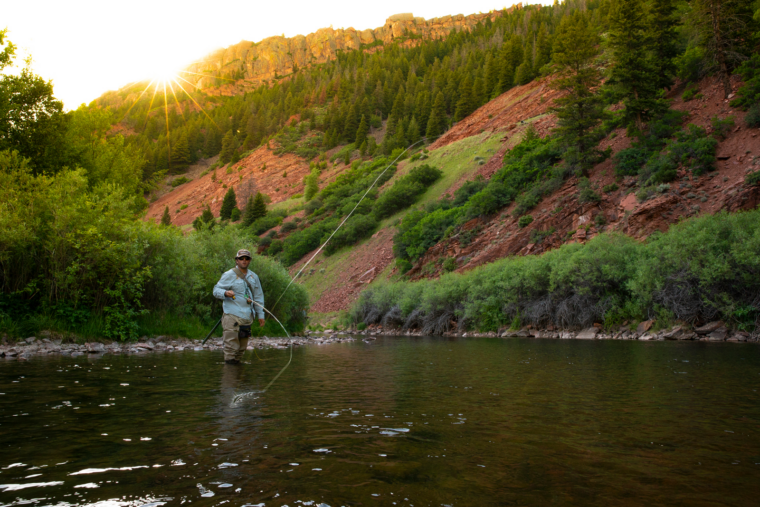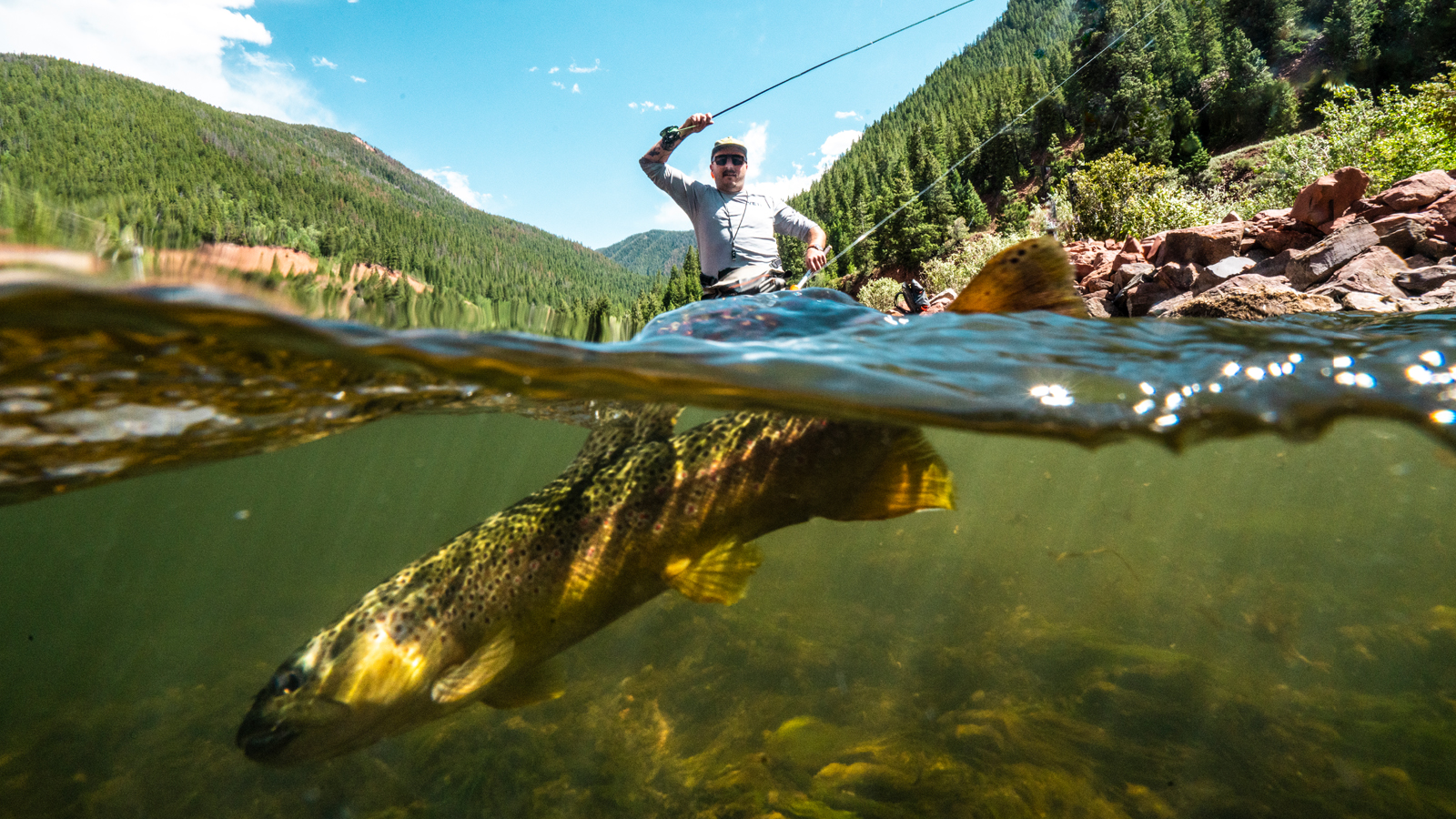
WORDS • MARK RAUSCHENBERGER
Bacon and eggs sputter in a frying pan inside a quaint fishing cabin nestled near the mouth of a picturesque canyon. A pair of fishermen, already wearing their waders, mill around the kitchen exchanging fishing stories, killing time while the hearty breakfast cooks. A nervous anticipation hangs in the air. It’s not the kind that prefaces a trip to the dentist, but the kind that you used to feel when you were a kid on Christmas morning. The kettle, holding water for morning coffee, begins to scream. It’s almost time.
The fly fishing community has bestowed a handful of rivers with iconic status. Colorado’s Fryingpan River is amongst the upper echelon of fishing destinations for anglers across the globe. From its headwaters near the spine of the Sawatch Range, along the Continental Divide in central Colorado, the Fryingpan River tumbles westward on its way toward the confluence with the Roaring Fork. Though the Fryingpan Basin is some 42 miles in length, it’s the 14 miles that lie beneath Ruedi Reservoir just upstream of Basalt, Colorado, that garner the most attention from fly fishers.
Completed in 1968, the Ruedi Dam provides an ideal habitat for both the brown and rainbow trout that live in the river below, prized catches for anglers worldwide. The water that is pumped through the hydroelectric dam is a consistent temperature year-round, which keeps the river cool during the summer and free from ice and fishable during the cold, winter months.

Another unique characteristic of this watershed which helps grow such incredibly large trout is the presence of nutrient-rich Mysis shrimp. These freshwater crustaceans were stocked in Ruedi Reservoir alongside Kokanee salmon during the 1970s with the hope that the young salmon would feast on the shrimp. This never came into fruition, however, since it turned out that the shrimp and salmon actually share the same food source, phytoplankton.
Since the 1970s, the shrimp have established a strong, independent population. They’re bottom dwellers and thrive in the deep, dark and cold water near the intake of Ruedi Dam near the reservoir floor. Subsequently, the shrimp are sucked through the dam and provide an unparalleled food source for the trout that inhabit the uppermost reaches of the Fryingpan, just below the spillway. Some of these brown and rainbow trout can grow to over twenty pounds thanks to the incessant supply of protein-rich shrimp.

In addition to the shrimp buffet, The ‘Pan,’ as it’s colloquially known amongst anglers and locals, offers up some of the most diverse and robust aquatic insect life of any of river on the planet. On even the of coldest winter days, you’re likely to find something hatching. When the water warms during the spring and summer months, however, the bug life really starts to explode. Mayfly, caddis, stonefly and the legendary green drake hatches blanket the river and make for some of the best dry fly fishing on the planet. It’s not uncommon to be standing in the river among hundreds of rising trout, methodically sipping insects from the river’s surface film.

Just because there is a ton of forage for the trout, however, doesn’t mean the fishing is easy. The sheer volume of food affords fish the luxury of being extremely picky. In fact, they’re known for being difficult to coerce into eating a fly. This river is recognized as one of the most technically demanding on the planet. Long, fine leaders, frequent fly changes and perfect presentations are the name of the game. If the fly pattern isn’t perfect or if the cast isn’t spot on, one can rest assured that the fish will not cooperate. Experience and poise are rewarded here, and it isn’t uncommon for the novice angler to leave without putting a fish in the net.




Compared to other world-famous rivers like the Missouri or the Snake, the Fryingpan is Lilliputian in size. The smaller volume of water makes it easy to spot the massive fish as they feed on insects above and below the surface of the water. Nothing gets the blood pumping like watching a 24-inch trout lazily sipping insects from a bankside eddy. If an angler can see the fish, though, it’s a relatively safe bet that the fish can see the angler as well. The trout in the Fryingpan have grown accustomed to the presence of anglers and often will not swim away when pressured like they would in other rivers. Instead, trout will simply refuse to eat, giving anglers the proverbial “middle fin” each time their fly drifts by.

Back at the cabin, breakfast is all wrapped up. Armed with thermoses full of hot coffee, it’s time to hit the water. Golden stonefly shucks cover the rocks along the riverbank, left by an army of nymphs that crawled out of the water to hatch overnight. Clouds of caddis fly silently above the crystal-clear, ice-cold water. A handful of mayflies are emerging, their long, slender bodies glowing beneath the warm, morning sun. Just like clockwork, the fish begin to show themselves as they deliberately sip insects from the surface of the water. Today, like every day, the river will provide the unique opportunity to catch the fish of a lifetime. But more importantly, it will provide a chance to revel both in the triumph and the defeat that comes with each and every moment spent fishing in this legendary place.

